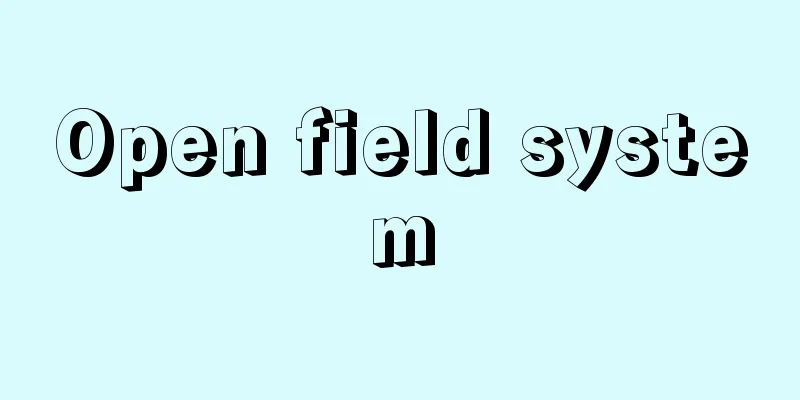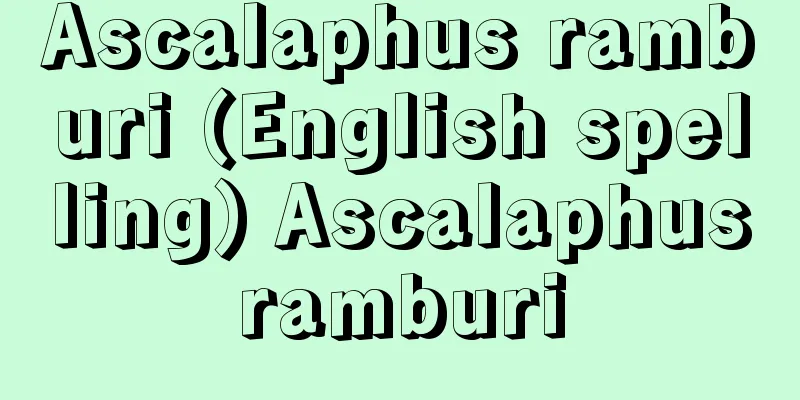Open field system

|
A system of farmland that was dominant in the plains of Europe from the Middle Ages to the early modern period. The several plots that made up a village's common land (farm) were a collection of pieces of land each belonging to an individual farmer, and the common land as a whole was a complex mixture of land holdings (mixed land system), but there were no hedges, fences or other barriers between the holdings within the same plot, and the plots were open and continuous. The shape of the plots included the irregular open land in the shape of a puzzle, as was common in southern France and Italy, but typically they were long open land with regularly-spaced strips of land, as seen north of the Loire and Danube rivers, and in most parts of England. These differences in the types of farmland corresponded to the types of ploughs. In the north, where the three-field system and strong community practices developed, large wheeled ploughs pulled by several animals appeared, which were suitable for heavy, wet soils, but because the plough trains could not be easily turned, extremely long and narrow fields were required. In contrast, in the Mediterranean region, where the traditional two-field system was maintained and the land was cultivated shallowly with light wheelless ploughs, the ploughs were closer to square, and the ridges could be changed or crossed. Whether the three-field system or the two-field system, the fields that were not cultivated and the fields after the harvest were left for communal grazing by the peasant's livestock (the number of head was based on the land area owned), according to traditional village practices, and the soil was naturally restored by the livestock's manure. In this way, the open land system was suited to the tradition of mixed farming or livestock farming, which is unique to Europe and uses livestock to produce grain. However, since the common arable land alone was insufficient for grazing livestock, pasture land within the common lands, such as forests and fields, was also used for grazing. The communalization of agriculture required a permanent agreement among all members of the village community, including the lord, because the lord's direct land was often mixed with land owned by the peasants. The village's customs (rules) as an agricultural community were wide-ranging, including not only communal grazing, but also the setting of boundaries for cultivated fields and farming areas, control over the type of crops and the time of harvest (the so-called "compulsory cultivation"), and various usufruct rights on the communal land. [Inoue Yasuo] "Medieval Economy and Society" by M.M. Postan, translated by Eiichi Hosaka and Ikuo Sato (1983, Miraisha) " "The Basic Characteristics of French Rural History" by Marc Bloch, translated by Kenji Kono and Jiro Iinuma (1959, Sobunsha) " "Georg von Below, A History of German Agriculture in the Middle Ages, translated by Yozo Horimai (1955, Sobunsha)" Source: Shogakukan Encyclopedia Nipponica About Encyclopedia Nipponica Information | Legend |
|
中世から近世にかけて、ヨーロッパの平野部集村地方で支配的であった農地制度。村の共同耕地(耕圃(こうほ))を構成するいくつかの耕区は、それぞれ各農民の持ち分に属する耕地片の集合体で、共同耕地全体としては保有地は複雑に混在している(混在地制)が、同一耕区内の保有地の間には生け垣、柵(さく)などの仕切りがなく、一続きで開放されていた。耕区の形状には、南フランスやイタリアに普及していたようなパズル状の不規則開放耕地もあったが、典型的にはロアール川とドナウ川の北方、およびイングランドの大部分の地方にみられたような、細長い帯状の地条が規則的に並ぶ長形開放耕地であった。このような耕地の型の相違は、犂(すき)の型の相違にも対応する。三圃農法と強固な共同体慣行が発展した北方では、重く湿った土壌に適合した、何頭もの家畜によって牽引(けんいん)される大型の有輪犂が出現するが、この犂の隊列は簡単に方向転換できないところから、極端に細長い長形の耕地が要求された。これに対し、伝統的に二圃制が維持され、軽量な無輪犂で土地を浅く耕していた地中海地方では、耕地は正方形に近づき、畦(あぜ)の方向を変えたり、交差させることもできた。三圃制であれ二圃制であれ、休作中の耕圃や収穫後の耕圃は、村の伝統的慣行に従って、農民の家畜(その割当て頭数は保有地面積が基準)の共同放牧にゆだねられ、家畜の糞尿(ふんにょう)によって自然に地味が回復された。このように、開放耕地制度は、家畜を利用して穀物生産を行うヨーロッパ特有の混合農業ないし有畜農業の伝統に適合したものであった。しかし家畜の放牧には共同耕地だけでは不十分なところから、森林、原野などの共同地内の牧草地も放牧にあてられた。 農業の共同化については、領主を含めて、村の全共同体成員の間で恒常的な取決めが必要とされた。それというのも、領主の直営地も地条として、農民が保有する地条の間に混在する場合が多かったからである。農業共同体としての村の慣行(掟(おきて))は、共同放牧以外にも、耕圃や耕区の境界設定、作物の種類や収穫の時期の統制(いわゆる「耕作強制」)、あるいは共同地におけるさまざまな用益権など、広い範囲に及んだ。 [井上泰男] 『M・M・ポスタン著、保坂栄一・佐藤伊久男訳『中世の経済と社会』(1983・未来社)』▽『マルク・ブロック著、河野健二・飯沼二郎訳『フランス農村史の基本性格』(1959・創文社)』▽『ゲオルグ・フォン・ベロウ著、堀米庸三訳『ドイツ中世農業史』(1955・創文社)』 出典 小学館 日本大百科全書(ニッポニカ)日本大百科全書(ニッポニカ)について 情報 | 凡例 |
<<: Jerusalem liberated - Gerusalemme liberata
Recommend
Cassini, JD
…He was invited to join the newly established Aca...
The Great Depression
The overproduction depression that began in 1929....
Giant assassin bug - Ootobi sashigame
…The red-spotted assassin bug Haematoloecha is a ...
Churriguera, JB
…An architectural style of the late Spanish Baroq...
Ie [village] - Ie
…An island located 10km northwest of the Motobu P...
Song Ok
Date of birth and death unknown. A cifu writer fr...
Nuclear fuel material
A substance that absorbs neutrons in a nuclear re...
Relationism
...In the traditional European view of existence,...
Sado Fox
The title of a Kyogen piece. A side kyogen piece,...
Indian characters - Indian characters
A general term for the characters that belong to t...
Yokohama [town] - Yokohama
A town in the center of the Shimokita Peninsula, K...
Spiral galaxy - Uzumakiginga (English spelling) spiral galaxy
Names of galaxies based on their shape. Spiral gal...
Historical School - rekishigaku is (English spelling) historische Schule German
The orthodox school of economics in Germany at th...
The Story of Kofu
A classic Korean novel. A folk tale that had been...
Right-handed writing - Yuhitugaki
A term used in paleography. Generally, documents i...









